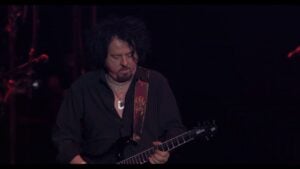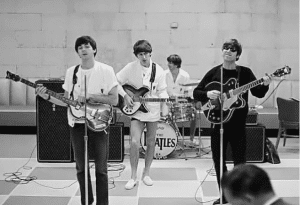Drummers Who Got More Famous Than The Singers

The spotlight in most bands follows a well-worn path from center stage outward: the vocalist commands the crowd, the guitarist shreds into memory, and the rhythm section keeps everything grounded from the shadows. Drummers, more often than not, are content to hold the pulse without courting much attention beyond a flashy solo or two. Decades of rock history reinforce this pecking order—fans can rattle off iconic frontmen far faster than they can name the person behind the kit.
Yet there are moments when the backbeat refuses to stay in the background. Some drummers radiate personality so fiercely that cymbals and toms become a launchpad rather than a hiding place. Whether through off-the-wall stage antics, a magnetic media presence, or simply undeniable musical flair, they flip expectations and end up defining the band’s public image as much as—if not more than—the singer they’re supposed to support.
This article takes a closer look at three such stick-wielding standouts. Each story shows how charisma, creativity, and perfect timing can upend rock’s usual hierarchy, proving that the most compelling figure in a group doesn’t always hold the mic.
Tommy Lee
The first thing that set Tommy Lee apart was pure spectacle. Mötley Crüe already had a larger-than-life image, but Lee took it to another dimension with spinning cage drum kits, mid-air solos, and a thunderous style that fused metal power with funk agility. While front-man Vince Neil handled the mic, Lee’s acrobatics behind the kit drew just as many eyes—sometimes more—proving that a drummer could be the visual focal point of a stadium show.
Stage theatrics alone don’t explain why Lee became the face of the band to a broader audience. His headline-grabbing romances with Heather Locklear and Pamela Anderson made him tabloid royalty, and the infamous home video leak only amplified that notoriety. When a drummer becomes regular fodder for entertainment magazines and late-night monologues, the band dynamic inevitably tilts in his direction.
That crossover fame continues today. A Hulu miniseries, Pam & Tommy, told a dramatized version of his life, keeping his name in pop-culture rotation long after Mötley Crüe’s chart peak. Even casual listeners who can’t name a single Crüe album recognize Tommy Lee, underscoring how his charisma pushed him well past the customary confines of the rhythm section.
Ginger Baker
Ginger Baker didn’t merely keep time—he reinvented it. Blending jazz phrasing with African rhythms, he treated rock drumming as an open canvas, laying down extended solos and odd-meter grooves that felt radical in the mid-1960s. Cream’s songs may have been built around Eric Clapton’s guitar lines and Jack Bruce’s vocals, yet Baker’s polyrhythmic fireworks ensured every spotlight found its way to the back of the stage.
Personality played a huge role as well. Baker’s volcanic temper, penchant for on-tour fistfights, and habit of driving sports cars at terrifying speeds made him a magnet for mythmaking. Reporters loved his unfiltered quotes; fans devoured tales of near-misses and backstage blowups. The press christened him “rock’s first superstar drummer,” a title he wore as defiantly as his red hair.
Achieving that kind of renown in a trio that included Eric Clapton is no small feat. Yet by the time Cream disbanded, Baker’s name carried nearly the same cultural weight as Clapton’s. His later projects—Ginger Baker’s Air Force, collaborations with Fela Kuti—only expanded his legend, sealing his status as a drummer whose fame comfortably outpaced the singers around him.
View this post on Instagram
Keith Moon
Keith Moon approached the drum kit like a demolition expert with perfect timing. He filled every available sonic space with rapid-fire rolls, cymbal crashes, and unexpected accents, propelling The Who’s songs with a manic energy no metronome could capture. Even when Roger Daltrey’s vocals and Pete Townshend’s power chords battled for the foreground, Moon’s chaotic precision made listeners wonder where to look—or listen—first.
Offstage, he leaned into a persona that blurred prankster comedy and outright mayhem. Hotel room explosions, televisions tossed from windows, and the legendary Lincoln Continental plunged into a Holiday Inn pool became folklore within months of happening. Stories like these circulated faster than concert reviews, ensuring Moon was as much a pop-culture character as he was a musician.
Tragically, the reckless habits that fueled his fame also cut his life short at 32. Yet decades later, newcomers to The Who often learn Moon’s name before they memorize the band’s discography. His outrageous spirit and innovative drumming continue to define the group’s identity, proving that sometimes the loudest voice in a rock band isn’t singing at all—it’s crashing cymbals and pounding toms from center back.
View this post on Instagram











